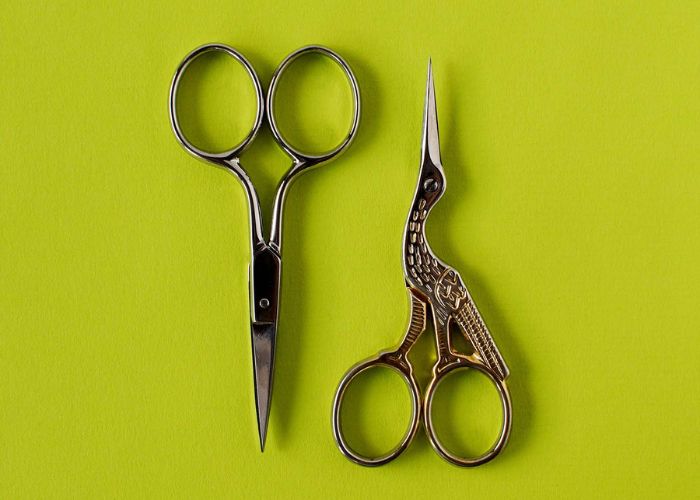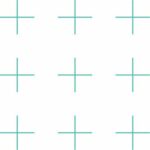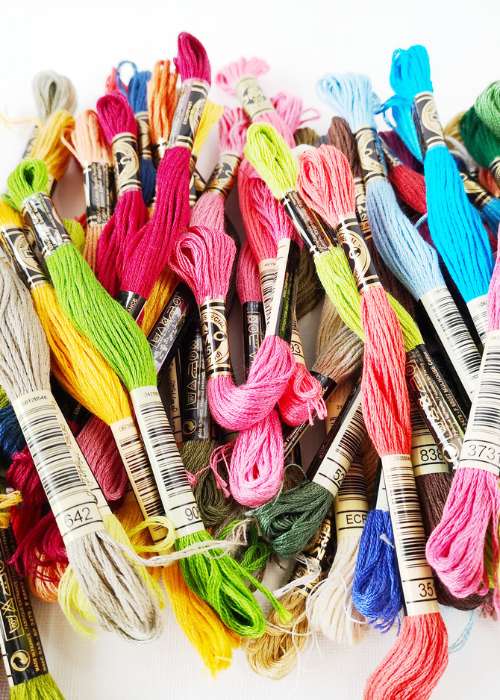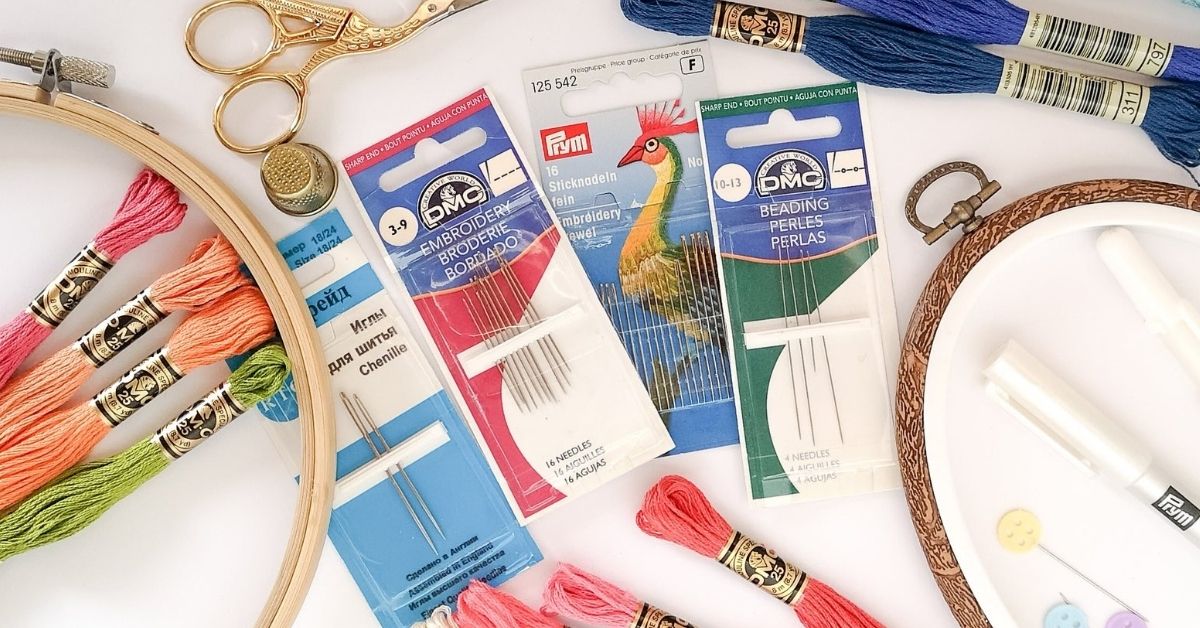Hand embroidery needles and all you need to know to choose the right one
It is so hard to find a needle in a haystack! But what about choosing the best hand embroidery needle from a bunch of needles? Is it much easier?
You probably already found out that not all the needles are the same. They vary in size and shape and are made for different purposes. So do we need them all? If not, which ones should be on our list and why?
Why does the type of hand embroidery needles matter?
Choosing the right needle will make your hand embroidery process more pleasant and easy. Some time ago, I struggled with bullion knots and french knot stitches, and it all was happening just because of the wrong choice of needle. After changing the needle, the process became fluid, and the results were much better.
When I wanted to embellish my hand embroidery with beads and sequins, I had another problem – the beads were too small for every needle I had. But, again, the problem was solved with the help of the right needle.
So, the hand embroidery needles you choose have to be specific for the task. Two criteria define the needle – its type and size.
Types of hand embroidery needles
There are many different types of needles, and there are many ways to use them. Still, in this blog post, I will talk only about the needles I use in hand embroidery. I will mention only the main characteristics and most common ways to use them.
Crewel needles (also called embroidery needles)
- Sharp point.
- Medium length.
- Shaft slightly thinner than the eye.
- Used for: general surface embroidery, crewel work, goldwork, whitework, and practically any embroidery technique that requires a sharp needle.
Tapestry Needles (cross stitch needles)
- Blunt, rounded point.
- Medium length.
- Long eye, shaft slightly thinner than the eye.
- Used for: canvas work, cross-stitch. Also, this needle is handy for whipped and laced stitches because a blunt tip helps to avoid snagging the main stitches and bleeding fingertips.
Chenille Needles
- Very sharp point.
- Large eye, shaft lightly thinner than the eye.
- Used for: thicker or multi-stranded threads, braids, metallics, chenille thread. Used in crewel and ribbon embroidery.
Milliner Needles (Straw Needle)
- Sharp point.
- Long and fine.
- Has a round eye that is not wider than the needle shaft.
- Used for: appliqué, bullion knots, cast-on stitch, and French knots. Because of the longer shaft and the eye of the same size as a shaft, this needle makes it easier to wrap the thread around the needle many times and pass it through the wrapped threads.
Beading Needles
- Sharp point.
- Long, very fine shaft.
- Long, narrow eye.
- Used for: working beads, cords, pearls, and sequins.
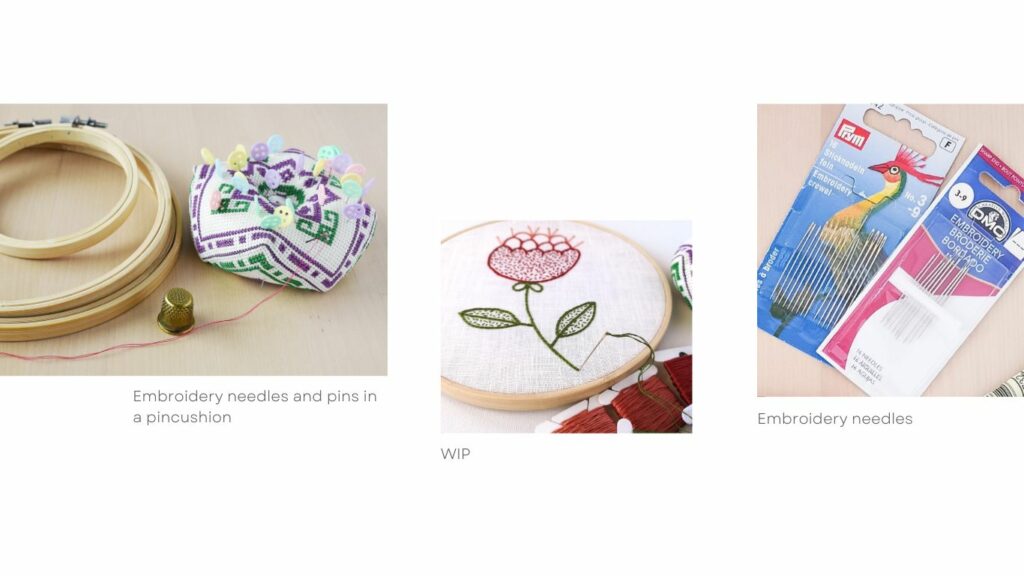
The sizes of hand embroidery needles
Crewel needles come in sizes 1 – 12, with 1 being the largest and 12 the finest.
Tapestry needles come in sizes 13 – 28, with 13 being the largest and 28 being the finest.
Chenille needles come in sizes 13 – 28, just like tapestry needles.
Milliner Needles come in sizes 1-10, with 1 being larger and 10 being finer.
Beading Needles come in sizes 10 (thicker) through 15 (thinnest).
How to choose the right size of hand embroidery needle
When you decide on a needle for your next project, consider:
- How thick is the thread you are going to use? The shaft of the needle should be about as wide as the embroidery thread. If you use a standard 6 stranded embroidery floss, a needle size will depend on how many floss strands you will use. For all 6 strands, I would recommend using needle size 5, for 3-4 strands – No. 7, for 2-3 strands No.8, and for a single-strand – No. 9. Your choice will also depend on the fabric you choose to embroider on.
- How thick is the weave of the fabric? There should be no significant resistance in the material when pulling the eye of the needle through. If it’s hard to get the needle through, you should choose a larger one. The hole the needle makes should be large enough for the thread to pass through but not more giant.
- What stitches are you going to use? Tapestry needles are your choice if you do canvas work, cross-stitch embroidery, or whipping or lacing stitches. For bullion knots, french knots, or cast-on stitches – choose Milliner needles.
- What materials are you going to use? If you use thick wool or ribbon for embroidery, pick Chenille needles. For the bead embroidery – choose beading needles.
Take good care of your hand embroidery needles
Whatever type of needles you choose, remember to take good care of them. Your needles must be straight and have undamaged tips. They should slide effortlessly through the fabric, not pull at it or tear it. If the needle is corroded, bent, or not sharp anymore, change it with a new one.
There are many ways to keep your needles organized. My favorite tools and methods are:
- The needlebook. It is a small textile book made from felt fabric with pages to keep your needles, pins, and other essential embroidery tools like scissors and thimble. It is very convenient if you embroider when traveling.
- A pincushion. It is a small, stuffed cushion, typically 3–5 cm across. It is used to store pins or needles with their heads protruding to take hold of them quickly, collect them, and keep them organized. Pincushions are typically filled with ground walnut shells or steel wool to keep your needles sharp.
- Keep your needles in their original package, so you will always know their size and type.
If you keep losing the needles while you embroider or use more than one needle at a time – consider using a needle minder. This magnetic stitching accessory prevents your needles from getting lost when you need to take a short break from your stitching or as you are changing threads. They are made from two strong magnets with a decorative top and a plain backing magnet.
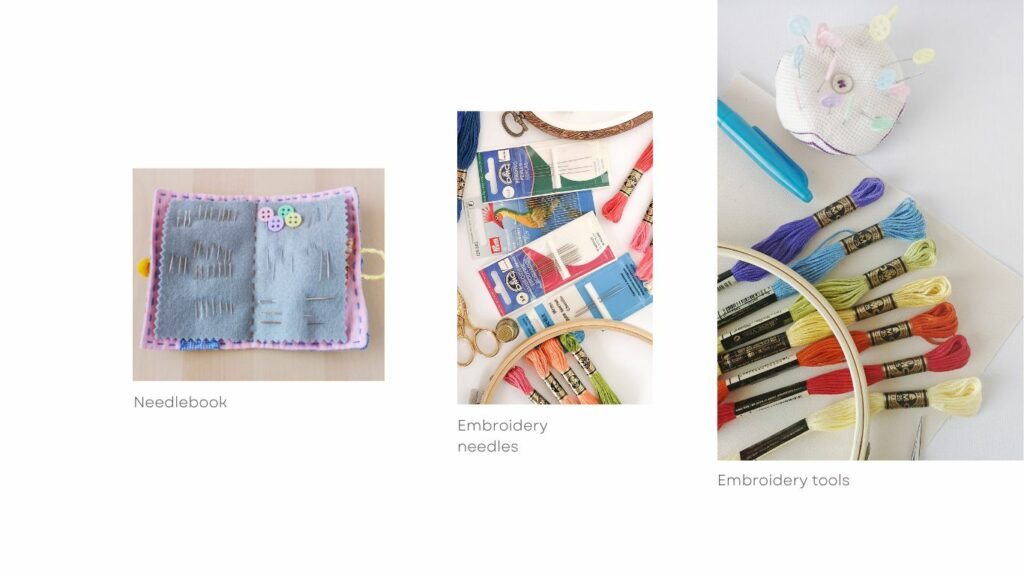
Hand embroidery needles to have
If you are a hand embroidery beginner, I recommend you buy a set of crewel needles (embroidery needles) in different sizes. Most hand embroidery floss producers offer these sets. In my photo, you can see the assortments of needles by PRYM and DMC.
Also, it is handy to have a couple of milliner needles. If you have a basic sewing kit at home, you probably already own these. Milliner needles will be irreplaceable for french knots and bullion stitches.
Later, you can add other types of needles, choosing them by the embroidery project you choose.
Don’t be afraid to experiment and change the size of the needle as you go. With some experience and practice, you will find your favorite needle size, and then you can buy more needles of that exact size.
Don’t be afraid to experiment and change the size of the needle as you go. With some experience and practice, you will find your favorite needle size, and then you can buy more needles of that exact size.
In conclusion
Hand embroidery needles are small but mighty and necessary embroidery tools. So powerful that it can make or break your embroidery experience.
There are two main characteristics to keep in mind when choosing the needle for your project: the type of the needle and its size. Make these choices right, and the embroidery process will be fluid and relaxing.
It is enough to have a starter assortment of embroidery needles to start embroidering. You can add more later!
And finally, don’t forget to take good care of your needles and not leave them on the sofa!
More about hand embroidery tools and materials:
- My favorite hand embroidery supplies, tools, and materials
- Hand embroidery needles
- Embroidery hoops
- Embroidery floss and threads
- Guide to hand embroidery fabrics
- Scissors for hand embroidery
- Water soluble stabilizers
- Carbon paper for pattern transfer
- Mending tools and materials
- Mini embroidery hoops
- Best hand embroidery books
- Embroidery materials for beginners
